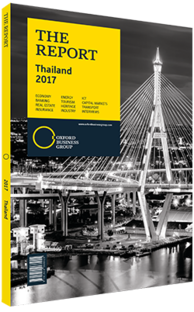Thailand's draft ICT strategy answers some questions and raises others
In 2016 the National Broadcasting and Telecommunications Commission (NBTC) published a draft five-year master plan for the telecommunications sector, with the previous master plan having ended in April 2017. Under the new plan, advanced technologies will be promoted and competition will be encouraged. One of the main issues addressed is the release of spectrum, and operators – particularly DTAC – are hoping the plan will reveal when new licences will become available.
Question Of Timing
The sector has been jarred by the ending of concessions. Timing issues regarding new licence auctions held to cover these openings in spectrum have created some uncertainty for customers and companies. The draft of the new plan partially relieved some concerns, as it detailed the release dates for the existing spectrum. But it fell short of expectations in that it did not discuss the actual auctioning of that spectrum. Thus, it is not yet clear when precisely the new capacity will be auctioned.
According to the draft plan, bandwidth will be available at 1800 MHz and 2.1 GHz in 2018, and at 2.6 GHz in 2022. In 2023 spectrum will be released at 2.6 GHz and in 2025 at 450 MHz, 860 MHz, 1500 MHz, 1800 MHz and 2.3 GHz. Other dates have also been discussed. Meanwhile, 2G will be phased out by 2019. As of early 2017 there were some 800,000 2G subscribers.
In January 2017 the NBTC announced a revised spectrum management timetable for wireless broadband at 1.5 GHz, 2.3 GHz and 2.6 GHz. It said that regulations for the 2.3-GHz and 2.6-GHz bands will be published by 2022, a delay from the original 2018 target, while those for 1.5 GHz will be completed by 2023. By 2025, the country will have an estimated 865 MHz of mobile bandwidth, up from the current 420 MHz.
Questions
Some moves have created controversy. Authorities have allocated 10 MHz of bandwidth at the highly valued 850-MHz range to the police for 4G services. Observers suggest that this may be granted to an mobile virtual network operator, rather than being used for public safety. The country has also failed to follow the International Telecommunications Union’s recommendation to use the 700-MHz band for mobile broadband, while commentators note a number of other irregularities. They say that it was unusual for the NBTC to award the Communications Authority of Thailand (CAT) bandwidth at the 2.1-GHz spectrum for free through 2025, adding that CAT was probably looking for the same at 1.8 GHz. Furthermore, the pick-up of 15 MHz at 2.1 GHz by AIS from Telecom of Thailand was perceived as unusual, and could be a precursor to a similar deal at 2.3 GHz.
Governance
In 2016 a new frequency act was approved by the Cabinet. Under the act, the NBTC will be under control of the Commission for Digital Economy and Society. Furthermore, a new National Broadcasting and Telecommunications Act, in draft for early 2017, will change the NBTC governance structure, from two five-member boards to one seven-member board.
These changes respond to the realities of convergence, easing guidance of a sector where the line between media and telecommunications is blurring. Board members will be chosen by a committee of judges and bureaucrats. They will then be recommended to the Senate by the Digital Economy and Society Ministry, with the prime minister having the final word.
Under the new act the NBTC will lose control of satellite communications, which many see as the commission losing independence. Analysts also point out that the act may allow for the reintroduction of “beauty contests” in the distribution of spectrum. This would represent a step back for the country, which had finally adopted international-standard auctions in 2012.
The country’s military government has already been seen intervening in the workings of the telecommunications regulators. When Jasmine International defaulted on its payment for the 4G spectrum, Section 44 of Thailand’s constitution was invoked by the prime minister and a new auction for the spectrum was carried out.
You have reached the limit of premium articles you can view for free.
Choose from the options below to purchase print or digital editions of our Reports. You can also purchase a website subscription giving you unlimited access to all of our Reports online for 12 months.
If you have already purchased this Report or have a website subscription, please login to continue.

